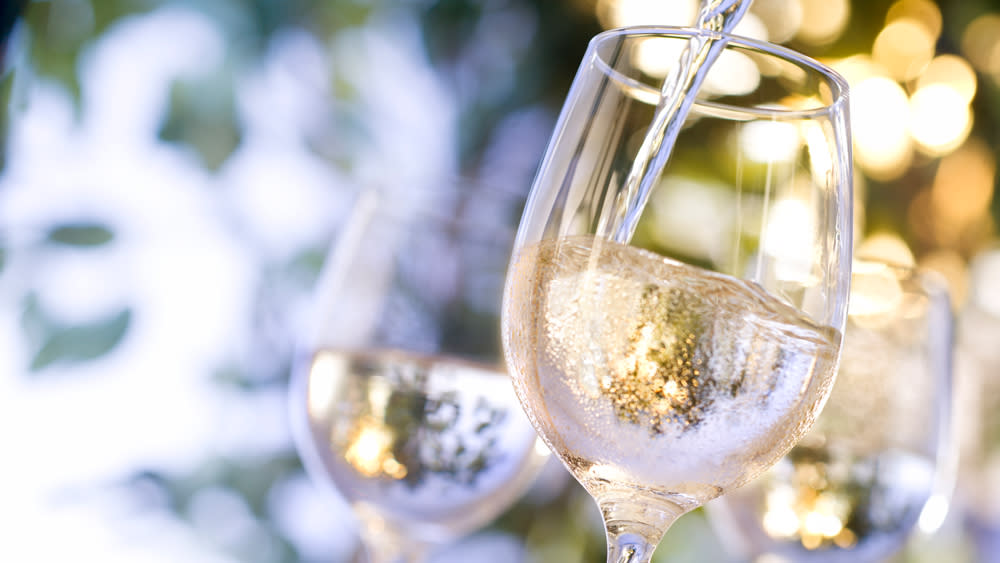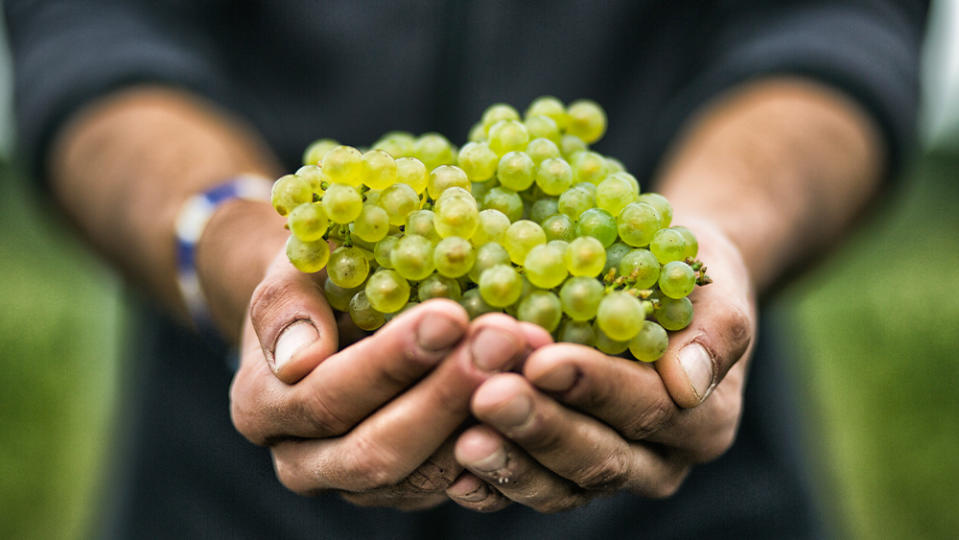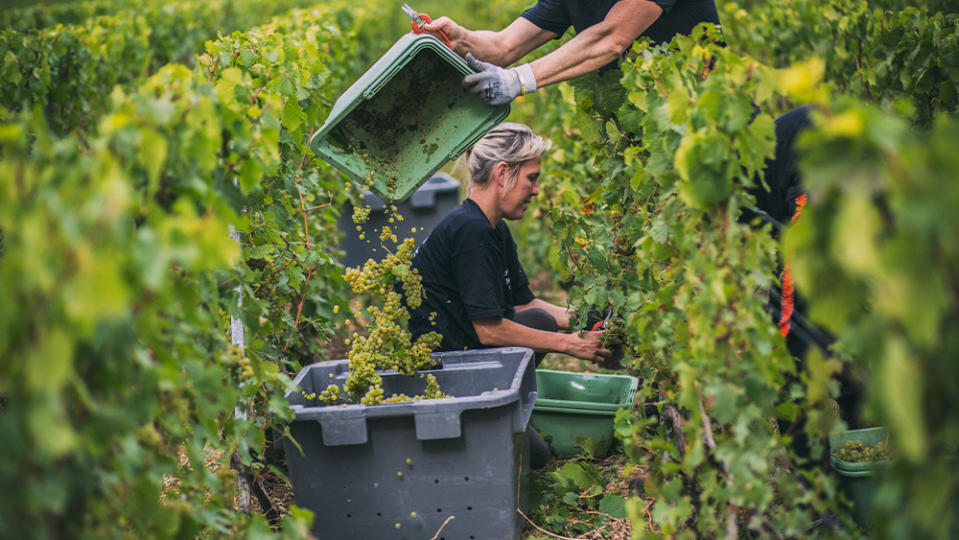How Acidity Affects Your Wine—and How Winemakers Try to Control It

Whenever wine is discussed, the term “acidity” always comes up, usually in relation to the wine’s flavor and other components such as tannins and texture. Acidity is one of the important elements in wine both from a strictly scientific view and from a taste perspective as well. It’s the quality in wine that makes your mouth pucker up and jumpstarts your salivary glands. All wines have acidity, whether perceived or unnoticed. Too little acid and wines can taste dull, flat, or flabby, too much and they can taste sour or tart.
As a quick chemistry refresher, lower pH corresponds to higher acid. Water is neutral with a pH of 7, milk is almost neutral at 6.5 pH, and most white vinegars are around 2.5 pH. Wine should fall somewhere between 3 and 4, although it can dip a lower or climb a little higher. In general, white wines will have higher acidity (and lower pH) than red, but that does not always hold true. All that said, the last thing anyone besides a winemaker needs is a technical scale by which to judge wine. The critical aspect to acidity in wine is how it affects the taste and potential ageability of the wine.
More from Robb Report
What It's Like to Take Richard Branson's Virgin Voyages Cruise Around Greece
A Wimbledon Umpire Got Mad at Fans for Popping Champagne Bottles During a Match
A wine’s pH or total acidity in grams per liter may be present on the winery’s tech sheet, a professional tool used by sales and marketing teams. Tasting notes or wine descriptions often don’t use the actual word acidity but will describe it with terms such as lively, zesty, zippy, vibrant, vivacious, vivid, animated, brilliant, or bright. Descriptors may also call a wine balanced or harmonious, which inform you that the acid and tannins, which translate to sensations of brightness and heaviness, are in equilibrium.

Winemakers who spoke with Robb Report regarding acidity agree that what is most important is freshness on the palate and in the glass. Benoit Gouez, chef du cave at Moët & Chandon, bristled at a question regarding acidity, stating, “I’m not obsessed with acidity; what I’m looking for is freshness. That’s a different thing. I don’t think most people love acidity when it’s too green and aggressive.” Just as wine experts often say that great wine is made in the vineyard, desirable acidity is as well. Gouez believes in picking grapes at the perfect point of freshness rather than simply relying on scientific analysis of pH levels. He further explains, “If you are obsessed with acidity and harvest [while] looking at a particular level of acidity, the risk you take is that the grapes don’t have the right aromas and that they will keep a very green and vegetal character.”
Sam Kaplan, winemaker at Napa Valley’s Arkenstone, makes several versions of collection-worthy, ageable Sauvignon Blanc. He agrees with Gouez’ assessment regarding pH versus freshness on the palate. “Most consumers don’t pay much attention to the actual pH numbers behind the wine,” he says. “They are definitely more concerned with perceived acidity and freshness.” He points out that he can maintain freshness in grapes grown in his Howell Mountain vineyards due to their position above the fog line. Long hours of sunshine help with ripening, while high altitude sustains lower daytime temperatures, which in turn preserve acidity and freshness. He also points out, “Having an in-house vineyard crew enables our team to do very small picks at a time,” which leads to harvesting at optimal ripeness.
The most common types of acid in wine are tartaric, malic, lactic, and citric. The most prevalent is tartaric acid, which is naturally present in grapes in fairly high quantities. In addition to the tartaric acid existing in grapes, winemakers may add more tartaric acid during the winemaking process if the acid is too low. Malic acid is also present in grapes and is responsible for the sense of vibrancy that many white wines have. It can be converted to lactic acid through the process known as malolactic fermentation, which adds a creamy texture to wine and softens the acid’s rough edges. Citric acid, giving a flavor similar to citrus fruits, is naturally available in grapes and can also be produced during fermentation.

At Inglenook, senior associate winemaker Chris Phelps crafts the historic Napa Valley estate’s well-regarded reds as well as its Rhône-style white, Blancaneaux, a blend of Roussanne, Marsanne and Viognier. He does not allow Blancaneaux to go through malolactic conversion, because, as he says, “In Blancaneaux, malic acid is an important contributor to perceived freshness; this is the principal reason for which malolactic fermentation is totally inhibited from pressing through bottling.” Like the other winemakers Robb Report spoke with, Phelps attributes this wine’s vibrancy to the vineyard.
“The freshness of Inglenook’s Blancaneaux is provided by its natural acidity,” Phelps says. “We grow our white Rhône varieties in cooler areas of the vineyard that are protected from late afternoon sun and heat exposure, mostly by virtue of their proximity to the western hills. The eventual choice of harvest date for each of the three varieties will be by far the most influential decision for determining Blancaneaux quality in a given vintage.”
Sparkling and still white wines are not the only ones in which acidity and freshness are a major factor. A balance of tannins and acidity are necessary in order to preserve wine for long periods of time; without ample amounts of both the wine may not last long in the bottle. Lower pH inhibits bacterial growth and prevents spoilage in the long and short term. Jesse Lange grows and produces Pinot Noir, Pinot Gris, and Chardonnay in Dundee Hills, Oregon. He tells Robb Report, “For our Pinot Noirs, unlike our Chardonnay’s and Pinot Gris wines, we encourage full malolactic conversion: where malic acid is converted into softer, lactic acids.” Lange points out that without the use of irrigation, his vines have to dig deep into the soil for nutrients, which “provides a baseline for wines with bright and complex acidities.” He never uses tartaric acid in his winemaking, explaining that these additions “make for relatively boring acid profiles and are a cop-out.”
Even the boldest reds require acidity for a feeling of freshness and youthfulness. Philippe Rolet, estate manager at Viña Los Vascos in Chile, makes a high-end Cabernet Sauvignon-Syrah blend called Le Dix, which is grown in a vineyard planted in 1959. “The expression of the plants of an old vineyard naturally have a higher acidity and lower pH than young vines” Rolet says. Decisions in the vineyard also affect acidity; Rolet relies on canopy management, or the art of maintaining a proper proportion and placement of grape leaves that shade vines to “protect the grape cluster and prevent acids from degrading, reaching phenolic maturity with better acidity.” Benoit Gouez of Moët & Chandon truly summed it up best when he said, “If you look at only the acidity you miss something. The question is about freshness and for that you have to enlarge your vision.”
Best of Robb Report
Why a Heritage Turkey Is the Best Thanksgiving Bird—and How to Get One
The 10 Best Wines to Pair With Steak, From Cabernet to Malbec
Sign up for Robb Report's Newsletter. For the latest news, follow us on Facebook, Twitter, and Instagram.


